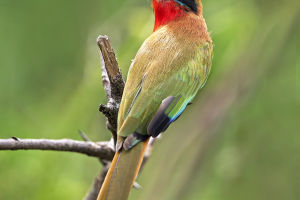The Sohal surgeonfish (Acanthurus sohal), known for its striking blue and yellow stripes, is not only a stunning addition to marine aquariums but also plays a vital ecological role in coral reef ecosystems.
Native to the Red Sea, this species thrives in pristine, well-maintained environments where water quality is paramount.
Understanding the specific water quality requirements of Sohal surgeonfish is crucial for their health and longevity, both in natural habitats and captivity. First, it's essential to acknowledge the natural habitat of Sohal surgeonfish. Found in the clear, warm waters of the Red Sea, these fish inhabit coral reefs characterized by high water clarity and minimal pollution. Mimicking these conditions in captivity is essential for the well-being of Sohal surgeonfish.
Water temperature is critical for Sohal surgeonfish, as they are native to tropical waters with temperatures ranging from 24°C to 28°C (75°F to 82°F). Maintaining a stable temperature within this range is vital to prevent stress and disease in captive specimens. Fluctuations outside of this range can compromise their immune systems and overall health.
Another crucial aspect of water quality is pH level. Sohal surgeonfish thrive in alkaline water conditions, typically with a pH range of 8.1 to 8.4. Monitoring and regulating pH levels within this range are essential to ensure proper physiological functions and metabolic processes in these fish. Fluctuations in pH can lead to stress, reduced immune function, and even death.
Adequate water circulation and oxygenation are vital for the well-being of Sohal surgeonfish. In their natural habitat, these fish inhabit areas with strong water movement and high oxygen levels. Thus, providing sufficient water flow and aeration in aquariums is necessary to simulate their natural environment and prevent stagnant conditions that can promote the growth of harmful bacteria and algae.
Maintaining pristine water quality also involves monitoring ammonia, nitrite, and nitrate levels. Sohal surgeonfish are sensitive to ammonia and nitrite toxicity, which can result from inadequate filtration or overfeeding. Elevated levels of these compounds can cause stress, respiratory problems, and even death. Regular water testing and proper filtration are essential to prevent ammonia and nitrite buildup and ensure a healthy environment for Sohal surgeonfish.
Controlling nitrate levels is crucial, as high nitrate concentrations can lead to algae blooms and negatively impact water quality. Performing routine water changes and implementing effective nutrient export methods, such as protein skimming and macroalgae cultivation, can help maintain optimal nitrate levels in aquariums housing Sohal surgeonfish.
Maintaining proper salinity levels is essential for the health and osmoregulation of Sohal surgeonfish. These fish require a specific range of salinity, typically between 1.020 and 1.025 in aquariums. Fluctuations outside of this range can stress the fish and disrupt their internal balance of water and electrolytes.
Providing optimal water quality is essential for the health and well-being of Sohal surgeonfish, both in their natural habitat and captivity. By understanding and replicating the specific water parameters of their native environment, aquarists can create a suitable habitat that promotes the longevity and vitality of these iconic reef fish. Regular monitoring, proper filtration, adequate water circulation, and nutrient management are key factors in maintaining pristine water quality for Sohal surgeonfish, ensuring their continued success in aquariums around the world.


